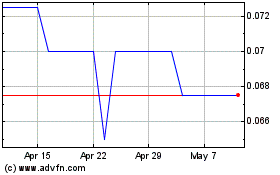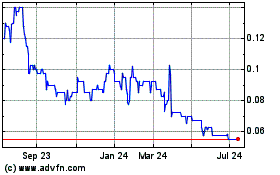TIDMALBA
RNS Number : 4172H
Alba Mineral Resources PLC
30 November 2015
30 November 2015
Alba Mineral Resources plc
("Alba" or the "Company")
Amitsoq Project Update
High grade, large flake size confirmed in initial petrographic
and geochemical results from Amitsoq Graphite Project in southern
Greenland
Further to the company announcement on 6 October 2015, Alba
Mineral Resources plc (AIM:ALBA) is pleased to report that a field
visit has been completed at the Amitsoq graphite project (the
"Project") near Nanortalik in southern Greenland in which Alba has
an option to earn up to a 70 per cent. interest. Samples taken from
historic workings at the Amitsoq mine have been subjected to
graphitic carbon analysis and a petrographic determination of flake
size by the British Geological Survey ("BGS") at their laboratory
in Keyworth, near Nottingham.
HIGHLIGHTS
-- Graphitic carbon contents vary from 20.5% to 35.4%, with an
overall mean graphitic carbon content of 28.7%, significantly
higher than the previously reported historic average grade of 20%
and higher than most reported advanced graphite projects
globally.
-- The graphite exists in various morphologies, ranging from
fine-grained specular forms to large discrete crystals, to
agglomerations which span areas of up to 15 mm in size.
-- Measurements of the discrete graphite flakes suggests that
the mean flake-size varies from 300-500 um ('Jumbo') to 180-300 um
('Large'), however the single most common flake size is in fact
'Super-Jumbo' (>500 um). The larger flake sizes attract a
premium in the market.
Historic Exploration and Production
Greenland has a long history of graphite mining. The Amitsoq
graphite mine was an open-cut operation between 1914 and 1924 and
produced circa 5,500 tonnes at an average grade of 20 per cent
graphite. The graphite was sent to Copenhagen for processing. Other
than a local government funded mineral inventory and potential
study in 1986, conducted by Danish company A/S Nielson, no other
graphite exploration or development has taken place in the licence
area since production ceased. Metallurgical testwork on behalf of
A/S Nielson reported some flakes reaching a maximum of 15 mm
("Super-Jumbo" flake size), with the average flake size being
0.2-0.3 mm (200-300 um,
or "Jumbo" flake size). Adits into the hillside are also present.
Present Results
A field visit was undertaken to the historic Amitsoq mine site.
The objectives were: to determine the access to the historic mine
site via marine and aerial means; to ascertain the suitability of
siting drill rigs in the area; to safely access any open workings;
and to collect representative samples of one of the worked graphite
horizons to determine carbon content and flake size.
The Company is pleased to report that access to the site was
straightforward and was achieved by chartering a helicopter from
the Narsaq heliport, located 85 km to the northwest. Several
landing sites were identified, but access by sea from the port of
Nanortalik, 16 km to the southwest, will be the preferred method of
access in future. During the helicopter flypast, a 500 m long
flat-lying area above the dipping graphite horizons was observed
that is considered ideal for the location of drilling pads if
resource definition drilling takes place at the site in future.
Access to the underground workings was by structurally-robust
unsupported adits that had been driven "horizontally" into the
hillside along the graphite lens. The lens varied between 1 to 2 m
in thickness, striking northeast, and dipping to the northwest at
35deg. Historical records of the workings state the lens attained a
maximum width of 15.2 m, but this was not confirmed during the
field visit. A total of ten (10) grab samples (G15101-G15110) were
collected during the underground examination: 4 samples across the
vein near the entrance; 3 samples across the vein 20 m down the
adit; and 3 samples further down the adit to the deepest accessible
part of the mine (approximately 40 m from entrance). One grab
sample (G15111) from the surface dump was also collected to
determine the effects of over 100 years of surficial weathering on
the graphite.
Graphitic Carbon Assay
All eleven samples were independently analysed by the BGS at
their laboratory in Keyworth, near Nottingham. A 50 g subsample was
crushed to <500 <MU>m, and a 1 g aliquot was used to
determine carbon content by using a deferential weight loss method
(heating the sample to 105degC to drive off water, and a subsequent
heating to 1000degC to oxidise the graphite).
The samples present a range of graphitic carbon contents from
20.5% (G15105) to 35.4% (G15101) with an overall mean graphitic
carbon content of 28.7% for the eleven samples. Additional
metallurgical test work will need to be performed to determine the
total recoverable graphitic carbon. These results should be
considered to be accurate to +/- 2% as a result of possible loss
from ignition of other volatile compounds, such as sulphur and
water.
The average grade of 28.7% from these samples at Amitsoq
compares favourably with the average grades of
advanced graphite projects globally. Of 36 projects analysed,
only two have grades of 20% or more(1) .
While these results at Amitsoq are taken from grab samples, the
grade, coupled with the confirmation of the prevalence of Jumbo and
Super-Jumbo flake size, provides great encouragement for future
work.
Graphitic Flake-Size Analysis
The flake size and petrography of four thin section samples was
performed at the BGS utilising polarizing microscope equipment.
Petrographic analysis indicated the samples were all recrystallized
graphitic gneiss/mica-schist. The graphite exists in various
morphologies ranging from fine-grained specular forms to dust and
are intergrown with silicate minerals to coarser-grained, discrete,
elongate laths that often lie parallel to the rock's fabric to
dense mesh- or web-like agglomerations which span areas of up to 15
mm in size.
Sample Flake Graphite flake-size (%) Mean
number counts size
(um)
--------- -------- --------
>500 300-500 180-300 150-180 75-150
um um um um um
--------- -------- ------- -------- -------- -------- ------- --------
Super Jumbo Large Medium Small
Jumbo
--------- -------- ------- -------- -------- -------- ------- --------
G15101 940 39 21 17 7 15 300-500
--------- -------- ------- -------- -------- -------- ------- --------
G15104 504 26 23 25 11 15 300-500
--------- -------- ------- -------- -------- -------- ------- --------
G15106 432 31 20 18 15 17 300-500
--------- -------- ------- -------- -------- -------- ------- --------
G15110 68 16 17 28 17 22 180-300
--------- -------- ------- -------- -------- -------- ------- --------
N.B. These grain sizes only correspond to discrete graphite
flakes, and do not consider specular/aggregated forms.
The mean flake-size of the discrete graphite varies from 300-500
<MU>m ('Jumbo') (G15101, G15104 and G15106) to 180-300
<MU>m ('Large') (G15110). This is in reasonable agreement
with a historic study by A/S Nelson, which reported a slightly
smaller average flake size of 0.2-0.3 mm (200 - 300 <MU>m).
However the most common flake size in three of the four samples
tested is in fact 'Super-Jumbo' (>500 um), comprising 16 to 39
per cent of the total graphite flake size across the four thin
sections sampled. The market places a premium on larger graphite
flake sizes.
Proposed Future Work
Several of the samples will now be dispatched to an independent
assay laboratory to determine the presence of deleterious elements
and to quantify the presence of sulphides.
A remote sensing study on the Project is expected to begin
shortly, funded by Alba, with the main aim of identifying surficial
occurrences of graphite on the 146 km(2) land mass of the licence
area. A second aim of this study is to identify ultramafic
intrusions which were investigated on Amitsoq in the early 1970s
and found to contain up to 2.4 g/t combined gold, platinum, and
palladium.
Quotations are currently being reviewed for a high-resolution
modern airborne electromagnetic (EM) and magnetic surveys to
identify graphitic horizons and sulphide bodies associated with
ultramafic intrusions. It is anticipated that this work will
commence in the summer of 2016. Follow-up work, if warranted, will
consist of diamond drilling to provide a resource estimation.
Additional maps and photographs of the Project area are
available on the Alba website at www.albamineralresources.com.
Mike Nott, Alba's CEO, commented:
"The results from this preliminary study are highly encouraging.
We have demonstrated that Amitsoq contains large flake size
graphite and appears to be of a high grade. Both of these factors
provide great encouragement for future work and development at
Amitsoq.
"The priority for Alba is to now determine the graphite
prospectivity on other parts of the licence by using modern remote
sensing and airborne geophysical techniques. The results of these
surveys can then be used to prove continuity and to plan an
exploration drilling programme to estimate the thickness and to
confirm continuity of the graphite horizons known to exist in the
Project area.
"The additional prospect of receiving Platinum Group Element
(PGE) credits within the Licence will be an exciting area for Alba
to investigate."
Competent Person's Declaration
(MORE TO FOLLOW) Dow Jones Newswires
November 30, 2015 10:06 ET (15:06 GMT)
Alba Mineral Resources (LSE:ALBA)
Historical Stock Chart
From Mar 2024 to Apr 2024

Alba Mineral Resources (LSE:ALBA)
Historical Stock Chart
From Apr 2023 to Apr 2024
